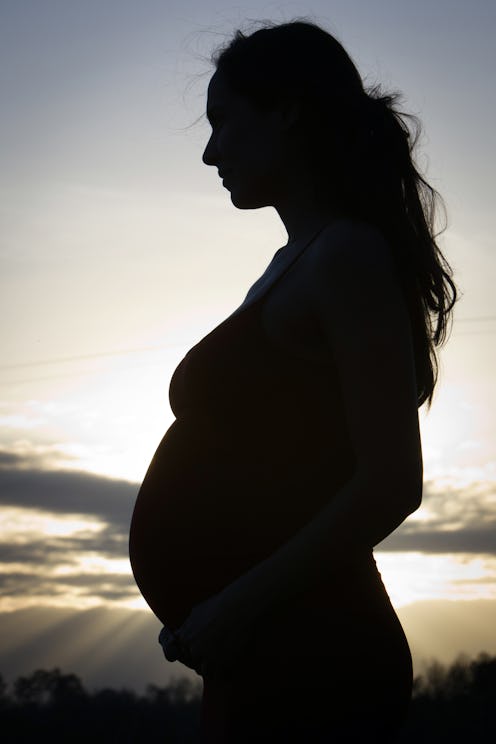Women are no longer expected to get married and have children at a young age; indeed, according to the Telegraph, the average age of new mothers was 30 in 2013. So here's some new information for those who have decided to delay motherhood until later in life: A new study published today in National Vital Statistics Reports found that older women have longer gaps between pregnancies than mothers who give birth when they're younger. The average amount of time between pregnancies for women who live in the United States is two years; according to this new research, that amount of time increases for women the older they are when they conceive. In a national analysis that gathered data from birth certificates, this interval ranged from just over two years to 32 months.
For women who were over the age of 40, the gap increased vastly to be from 39 to 76 months, respectively. They also found that women who were younger when they gave birth tended to have a shorter window of time between pregnancies, with the median range being between 11 and 14 months. Additionally, about a third of women had a pregnancy gap that was less than a year and a half, with the majority falling into the 18 to 59 month range. 20 percent had a gap of five years or more — and, notably, these individuals were also more likely to be older mothers.
Now, you may be wondering what the big deal about the gap of time between pregnancies is — but there's more to this story than you would think, since the health of the baby can be affected by the spacing. The CDC says that pregnancy spacing that is too short or too long can increase the risk of premature birth and the child's likelihood of developing autism. There have been many studies that have examined the possible health consequences of giving birth after a long pregnancy gap that have found negative links, but more research is needed to eliminate alternative explanations.
If you're wondering about other demographic factors that influence pregnancy spacing, white women tend to space their pregnancies farther apart than women of color. One possible explanation for why this is could be a lack of access to reproductive health care, as women of color face more barriers when it comes to getting contraception.
Pregnancy spacing isn't always planned or wanted either, as illness, miscarriage, and infertility can all be pointed to as reasons why women have long gaps of time between the births of their subsequent children. Lhamo Ellin is one example of a woman facing these issues, as her daughter was born 12 years after her son. "I tried. It didn't happen," Ellin told The New York Times about the time gap.
So what is the ideal amount of time to space between pregnancies? While the average among American women is between two and three years, according to the Mayo Clinic; somewhere after the 18 to 24 month range and before five years is the ideal. But, they also emphasize that when you choose to have children is a personal decision and thus might not fall into this time window. You should start using contraception again if you do not want to get pregnant, to avoid any possible mishaps. If you're pregnancy spacing was or is on either end of the spectrum, just be extra cautious and talk to your doctor if you're having concerns.
Images: Getty Images (3)
